Aurora Garrison | March 2018
Andy Warhol is an artist out of this world and out of his time. Warhol’s art is out of this world in two ways: Firstly, his drawing was flown to the moon on Apollo 12 and his drawing is in the only art museum in outer space. Secondly, his iconic Moonwalk from Apollo’s 11 first moonwalk is the most famous artwork to come out of the NASA space program.
Warhol had a sense of history as evidenced in his homage to Da Vinci’s work “The Last Supper” and other Renaissance artists; his work in the Sixties was so revolutionary and radical that art historians had to name his work under the new category of “Pop Art” to begin to study and understand the Warholian art revolution; and Warhol’s art and his persona as an iconic celebrity continue to shatter geopolitical and cultural walls as his fame and art are renowned around the world. Britain’s Time Out magazine rated Warhol in 2016 as the most famous artist of all time. And it’s a good argument.
Moonwalk illustrates the forever iconic moment in history when man first stepped on the moon in 1969. The Moonwalk Series (1987) depicts Neil Armstrong’s photograph of Edwin “Buzz” Aldrin, Jr. walking on the moon for the first time during the Apollo 11 mission. Moonwalk was intended to be part of a series entitled The History of TV, highlighting images of famous televised moments, which would have included ones of I Love Lucy and the Beatles’ legendary performance on the Ed Sullivan Show. At the time of Warhol’s sudden death in February 1987, Moonwalk was the only part of the History of TV Series that had been completed.
Moonwalk demonstrates Warhol’s great talents commemorating one of America’s culture and one of its most historic moments: man’s first walk on the moon. The power and passion of Warhol’s Pop Art is that we can artistically interact with our lives in the grocery store, in the newspapers and in the silver screen icons we see in movies and even the man on the moon. Warhol takes the ordinary subjects of our lives and makes them extraordinary through his art. This is his artistic sleight of hand.
Warhol’s Moonwalk artwork best typifies Warhol’s other-worldliness, an artist out of his own time and a forever-chronicler of the Sixties and the 20th century.
The US Space program and NASA were the highest achievements by the United States in the 1960’s, as we put two men on the moon on July 20, 1969. Warhol’s iconic Moonwalk is the universal image for the historical words of Neil Armstrong, “That’s one small step for man, one leap for mankind.”
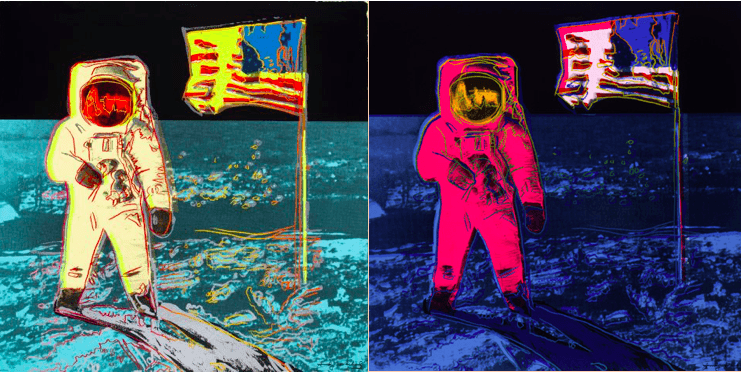
Warhol uses this NASA photograph from Apollo 11, but he significantly alters it. In the original photo, Aldrin is shown in profile, and to the right of the flag.
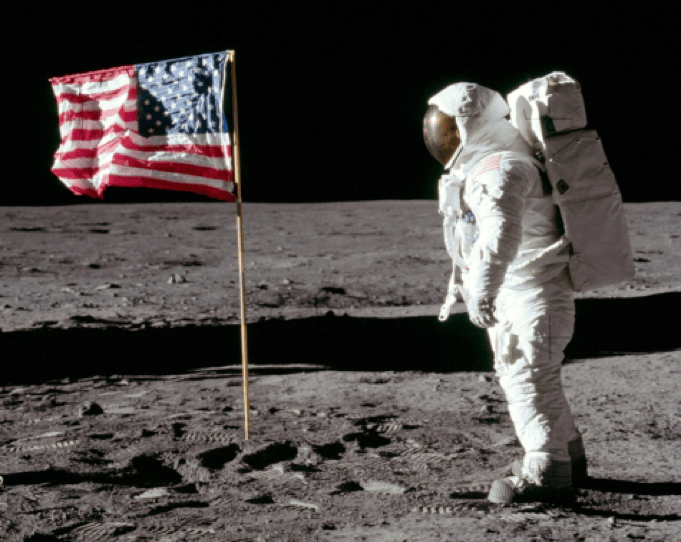
Apollo 11, June 1969. Photograph by Neil Armstrong. Detail from photo AS11-40-
5875 from the NASA’s Apollo 11 Image Library.
In Moonwalk we see Buzz Aldrin, as photographed by his fellow Apollo 11 astronaut Neil Armstrong. This is the famous “selfie” that Armstrong took of himself, using the visor of Aldrin’s space suit as a mirror. Warhol uses this photograph, but only after mirror-reversing it.
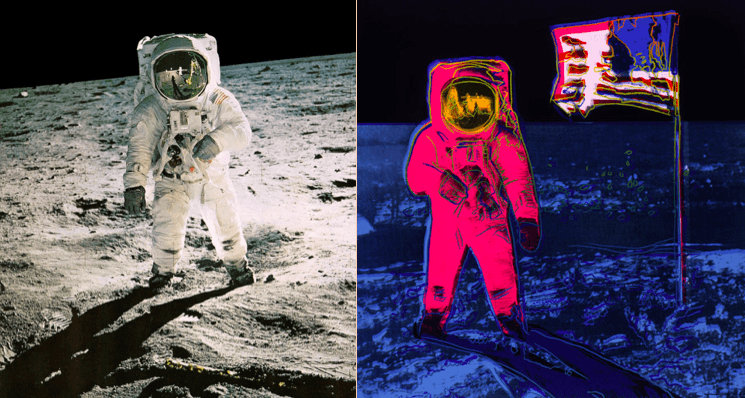
But before Warhol created Moonwalk, he had already become part of the NASA space program decades earlier. A few days before the Apollo 12 crew returned to earth, The New York Times reported that a miniaturized Moon Museum was secretly installed on a hatch on a leg of the Intrepid and left on the moon.
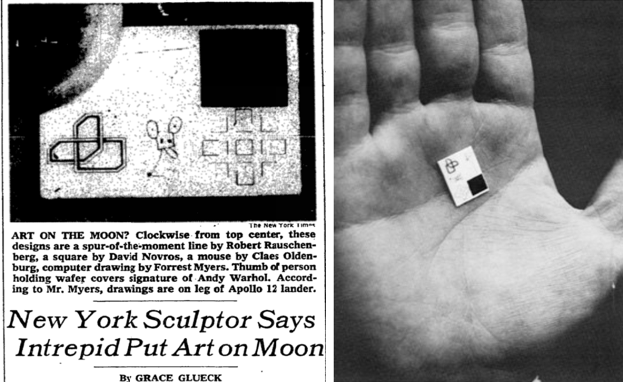
Actual size of the ceramic wafer (right).
The Moon Museum contained drawings by six leading contemporary artists of the day: Andy Warhol, Robert Rauschenberg, David Novros, Frosty Myers, Claes Oldenburg, and John Chamberlain.
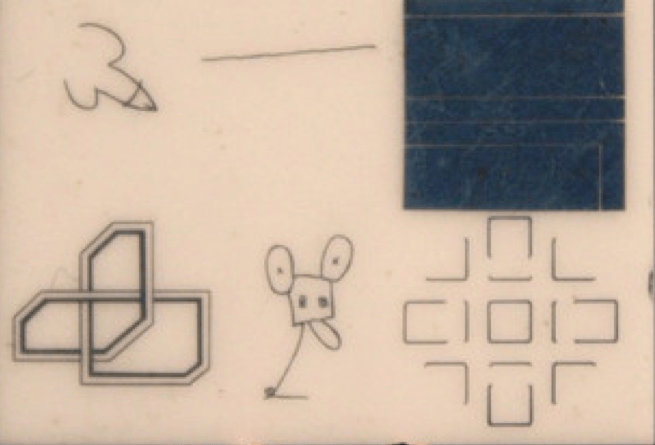
Myers, Claes Oldenburg, and John Chamberlain, The Moon Museum, 1969.
The six drawings were miniaturized and baked onto an iridium-plated ceramic wafer measuring just 3/4″ x 1/2″ x 1/40″, with the assistance of engineers at Bell Labs. Warhol’s contribution (which was strategically hidden by a thumb in the Times article), is described as “a calligraphic squiggle made up of the initials of his signature.” In reality, it’s a simple depiction of a phallus.
Warhol’s Moonwalk artwork best typifies Warhol’s other-worldliness, as an artist out of his own time and a forever-chronicler of the Sixties and the 20th century. It can be said that Warhol’s art was a small step for the Sixties, but a leap for an artistic revolution. And the people are still celebrating Warhol’s art and his artistic legacy in the 21st century.

